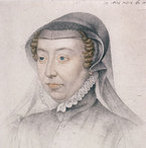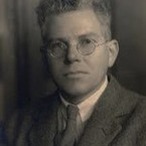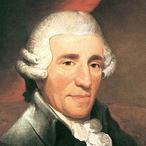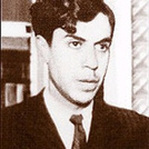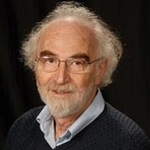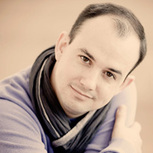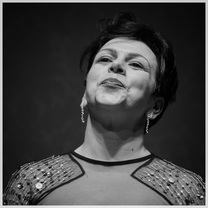 © Minjas Zugik 2014 © Minjas Zugik 2014 Contralto, Sonia Prina returned to the Wigmore Hall after her phenomenal debut to perform arias composed by G. F. Handel for the star castrato Senesino. Handel wrote many heroic roles for Senesino, a man noted for his fiery temperament, each playing to the castrato’s wonderfully rich lower register and to his ability to sing “allegros with great fire, and marked rapid divisions, from the chest, in an articulate and pleasing manner”. Sonia Prina’s amazing technique, and her willingness to explore the lower register of the contralto voice, made her performance a unanimous success: she is truly the Heir to Senesino! Prina chose three intense yet emotionally diverse slow arias in the program. In the first, “Ombra cara” from Radamisto, Prina wove a tale of loss and revenge, her dark voice full of despair and wretched vengeance. In “Pompe vane… Dove sei” from Rodelinda, Prina’s astounding breath control and rich tone imbued the aria with a deep sense of longing. The hypnotic orchestration of “Cara sposa” from Rinaldo, was chillingly delivered by Luca Pianca's Ensemble Claudiana, solidly underpinning Prina’s emotionally devastating delivery. The contrast between the tempi of the A and B sections worked very well, demonstrating the conflicting emotions of the aria. Of the five bravura arias which made up the majority of the program, and the whole of the encores, I must make special mention of the first, “Furibondo spira il vento” from Partenope. Prina’s technique and delivery of the rapid coloratura passages electrified the audience. It was the best performance of this aria I have heard. “Empio, dirò, tu sei” from Giulio Cesare, which was performed both in the first half of the recital, and as the final encore, was truly furious. Prina strutted about the stage, dominating the aria from beginning to end. Her G3 at the end of the B section, and the F3 at the end of the da capo, were utterly brilliant. Bertarido’s “Vivi Tiranno” from Rodelinda saw Prina in triumphant form, revelling in Handel’s superb composition, while “Venti Turbini” from Rinaldo saw her deliver the longs lines of semiquavers with frightening assurance. “Se fiera belva ha cinto” from Rodelinda was a much jollier affair, with Prina and Ensemble Claudiana having a great deal of fun in its performance. The highlight of the concert was the tremendous performance of the two pieces from Orlando: “Cielo! se tu il consenti” and “Ah Stigie larve”. In the first aria, Prina took the triplet phrases at blistering speed, while her characterisation in the second, the Mad scene from Orlando, was so authentic and riveting that it elicited a roar of approval from the audience. The orchestral offerings from Ensemble Claudiana came mainly from Theodora: the Overture, the Larghetto and the Courante. In a change from the program, we were treated to Handel’s Passacaglia Op. 5, Mvt. 4. Each was performed with skill and intelligence, the small ensemble able to tease new meaning out of the familiar pieces. From start to finish the Ensemble, with Luca Pianca at the helm, performed magnificently, their intelligent craftsmanship and nuanced performance both supporting and complementing Prina's Olympian performance. © James Edward Hughes 2014
0 Comments
Yende’s Rosenblatt Recital was her debut London Recital, and judging by her performance it will be the first of many. The last performer in the 2012-13 Rosenblatt Recitals series was the sensational young South African coloratura soprano Pretty Yende. She made her debut at the Metropolitan Opera in New York covering for an indisposed Nino Machaidze in Rossini’s Le Comte Ory with only a couple of weeks notice, and then covered for an indisposed Cecilia Bartoli in the same Opera in Vienna with only three days’ notice! She has already had her debut at La Scala, and is currently under the tutelage of the great Mariella Devia. Yende’s Rosenblatt Recital was her debut London Recital, and judging by her performance it will be the first of many. The first section began and closed with Rossini: “La Promessa” and “L’Invito” respectively. Yende displayed wonderful breath control and phrasing in “La Promessa” singing through one line and into the next, all the while modulating the dynamics with observable skill. In “L’Invito”, she navigated the coloratura passages with pinpoint precision. Yende’s beautiful high pianissimi in Bellini’s “Almen, se non poss’io” was for me the highlight of the fist selection, floating lightly yet securely with the true ring of a coloratura soprano. Speaking to the audience, Yende announced that she would insert Verdi’s “Stornello” into the program, which she sang with playful exuberance. This was followed by Donizetti’s “Il barcaiolo” giving us the first exciting glimpse of Yende’s highest register. My favourite selection of the evening was the Sonetti del Petrarca by Liszt. In the first song, “Pace non Trovo”, Yende was magnificent. She displayed a profound connection with the text which she communicated to the audience, coupled with a precise knowledge of the score (she sang without a score for the entire performance) observing little details like the quaver rest between the syllables “stes-so”. When she reached the phrase “ed amo altrui” the Cb6 was delicate without being constricted, and the Db6’s were perfectly placed. Again showing a full understanding of the text, Yende also impressed with “Benedetto sia’l giorno”, skilfully moving through the descending chromatic phrase on the word “lagrime”. The final piece, “I vidi in terra angelici costumi” was bursting with emotion: entrancing yet full of sorrow. The second half of the recital began with five Debussy songs, including the famous “Beau Soir” and “Clair de lune”. It was in “Apparition” that Yende most impressed. Her singing was intense, and she held the emotion right through to the last note. The playful “Mandoline” had Yende lightening her voice in the upper reaches, whilst bringing more chest resonance into the lower notes. James Vaughn, the accompanying pianist, was in his element here, glorying in Debussy’s wonderful music. Weill’s “My Ship” ushered in a series of four English language songs. Yende really played with the text, interacting with the audience, and displaying a velvety quality in her voice. Next came two songs by Gershwin. The first, “By Strauss”, again displayed Yende’s intelligent sense of phrasing. Accompanist James Vaughn was wonderful again at the piano, really getting under the skin of the music. “Blah blah blah” was the second Gershwin offering, allowing Yende to show off her comic timing to great effect. She leaned forward, singling out individual audience members at the end of each line, and was highly engaging. Bernstein’s “I feel pretty” was a perfect end to the section. It was clear that Yende was really enjoying herself, and the audience matched her levels of enthusiasm with its applause.
The final piece of the program was the aria “O luce di quest’anima” from Donizetti’s Linda di Chamounix. Yende was confident and comfortable with the high tessitura, her voice swelling magnificently on the Db6’s. The first encore was “Bel raggio lusinghier” from Rossini’s Semiramide. To follow “O luce di quest’anima” with this aria was a courageous choice. Yende pulled out all the stops to deliver a firecracker of a performance, her voice coruscating along the lines of coloratura, winding up the tension. After many stratospheric interpolated notes, Yende capped off the performance with a whopping E6, which earned her a standing ovation from many in the audience. The final encore was “O mio babbino caro” from Puccini’s Gianni Schicchi, which was beautifully sung, finishing off an exciting evening. Contralto Sonia Prina joined forces with the incomparable Il Pomo d’Oro for a memorable evening, combining the beauty and depth of Vivaldi with some breathtaking performances. It was a triumph for Prina, earning a rapturous applause from a packed Wigmore Hall. The first of the three Vivaldi cantatas we were treated to was “Perfidissimo cor!” which was accompanied only by Harpsichord, Lute and Cello. This intimate grouping allowed Prina to communicate, with a potent intensity, the emotional charge of the text, weaving an enchantment which remained throughout the evening. Prina’s famous coloratura came early in the recital, as she navigated effortlessly through the demisemiquaver runs occurring repeatedly on the word “sdegno” in the first of the two arias, which she ended with a formidably solid G3. The second aria contained many uses of elements of the harmonic minor scale, which requires pin-point accuracy of pitch to sound effective: a requirement that Prina was more than happy to deliver.
The first aria of the second Vivaldi Cantata, “Cessate, omai cessate”, opened with an interesting mix of pizzicato and bowed strings: the score stipulating that only the cello and one violin be bowed. At moments of emphasis, all the strings are designated arco, which gave an aggressive, whip-like effect to the phrase “Già barbare e spietate”. Prina’s beautiful ornament at the end of the B section lead straight into the da capo, where she added a series of tasteful mordents, turns and trills, finishing with an ornament that deliciously portrayed Prina’s dark and velvety lower register. The second aria set the Wigmore Hall on fire, as Prina performed at impossibly high speed, throwing out F5’s like fireworks, while adding even faster ornamentation in the da capo. The roar that came from the audience proclaimed the first half a resounding success. In the second half, Prina presented us with two arias from Vivaldi’s operas. The first, “Cosi potessi anch’io” from Orlando furioso, saw Prina don the mantle of the Sorceress Alcina, alternating between longing for her lover, and lamenting her lot at the hands of the god of love. Prina carried a beautiful legato line, with a warm and passionate tone throughout. The second aria, “Se in ogni guardo” fromOrlando finto pazzo, saw Prina rip through the music like lightning. Her precision in the difficult coloratura passages was astounding. The final piece in the second half was the cantata “Amor, hai vinto”. It is known as the Queen of Vivaldi’s cantatas, and is full of explosive and passionate music. The first aria starts with a powerful continuo line, and sinuous, interweaving upper stings, in pairs of resolving dissonances. Prina dealt expertly with the lines of triplet semiquavers, while declaiming emphatically the agitated and fiery text. The coloratura in the second aria was a pure delight to listen to in the hands of so athletic an artist. Prina choice of repertoire was well balanced, and an excellent showcase for her exhilarating contralto voice. The first of the Instrumental pieces, Giuseppe Brescianello’s Sinfonia in F, Op. 1, No. 5, was a joyous way to introduce Il Pomo d’Oro to the audience. The opening movement alternated between lively movement, and a series of slower, tender motifs played only by the higher strings. The other two pieces were Violin concertos by Vivaldi. The middle section of the first concerto, the C major RV 181, had a tender and mournful line for the violin which Riccardo Minasi, director of Il Pomo d’Oro, performed with intuitive and sensitive musicianship. The final concerto, the E minor RV 277 “Il Favorito”, had an astounding part for Riccardo Minasi, who truly took on the mantel of Vivaldi with virtuosity and skill. I must also mention the extraordinary Ludovico Minasi on cello, and Giulio D’Alessio on Viola, who managed to tease the most beautiful “alto” sounds right from the soul of the instrument. For the encore, Prina gave us two marvellous arias. The first was “Vedrò con mio diletto” from IlGiustino. Prina introduced the aria by telling us that it was one of her favourites, which she used to sing when she was pregnant. In her hands, the aria reprised the enchantment of the first cantata. Her dynamic decisions were perfectly considered, and her choice of ornamentation enhanced the already beautiful melodic line. It was wonderful to hear Prina use the lower registers in the da capo, rather than moving higher in the voice as is usually the case when this aria is performed by other singers. The second encore was "Nel profondo" from Orlando Furioso. She introduced the aria as being both funny and fast: and indeed it was. She interacted magnificently with both the orchestra and the audience: the wonderful “yes” gasped by Riccardo Minasi as Prina reached the low G3 on the word “mondo” received a hearty laugh from the audience. In the da capo, Prina launched herself up to a spectacular G5, and followed it immediately by plummeting down two octaves to a G3. It was a fantastic concert, one of the best I have been to. I left the concert exhilarated by the music, and determined to see this superb contralto again very soon. I was also very pleased to have had the chance to hear Il Pomo d’Oro, as they are truly one of the best period orchestras on the circuit today. The Wigmore Hall patrons turned out in full force to hear the exquisite voice of Venetian contralto Sara Mingardo. Accompanied by the Accademia degli Astrusi, conducted from the ‘cello by Federico Ferri, Mingardo spun a tail that lead us on a journey through 18th century Italian language repertoire, via some well known (Handel, Pergolesi & Vivaldi) and some lesser known (Galuppi, Martini) composers.  Sara Mingardo, contralto Sara Mingardo, contralto Opening with a series of resolved dissonances, Pergolesi’s Salve Regina starts with a haunting movement that works only when both the ensemble and the artist are moving as one, dynamically and emotionally. Mingardo and the players of the Accademia degli Astrusi were perfectly attuned to each other and to the nuances of the piece, with Mingardo’s moves into the chest register particularly compelling. Her messa di vocein the second movement, “Ad te clamamus”, were a masterclass in the art, while the Accademia degli Astrusi made beautiful work of the syncopated orchestration of “Et Jesum, benedictum”. Concerto a Quattro No.1 in G minor was the first offering from Baldassare Galuppi. Ferri and his team produced a very stately and intimate Grave e adagio, with fiery and vigorous entrances from the continuo in the Spiritoso. The Allegro was a lilting dance in minuet time, and credit must be given to Lorenzo Colitto on first violin for his handling of the more difficult passages. The cantata La Scusa was the second offering from Galuppi, organised into two recitative-aria couplings. Mingardo’s tender treatment of the first aria captivated from the onset, with beautiful phrasing and employing rich changes in dynamic and colour throughout the range. We returned from the interval to the Concerto a 4 pieno in D by Padre Giovanni Battista Martini. Federico Ferri has been involved in a publishing project relating to Martini’s music, and his direction here is indicative of his understanding both of the score, and of the composer. The Accademia degli Astrusi treated the chromaticism of the central Adagio movement with due care, and we were rewarded with a truly great performance. Handel’s powerful aria “La crudele lontananza” followed, with Mingardo’s voice ringing powerfully in the upper part of the range. Her characterisation here was pure heroic-Handel: strong and passionate. Rather than retiring from the stage, Mingardo sat at the back as the Accademia degli Astrusi performed Vivaldi’s Concerto madrigalesco in D minor. The opening conjured up and image of the Sun rising across the Venetian Lagoon. At the conclusion of the concerto, Mingardo rose and proceeded to sing the magnificent Nisi Dominus. In the sombre, dark and mysterious fourth movement, “Cum dederit”, Mingardo wove an enchantment that captivated the audience, particularly during the crescendo of the rising chromatic line “fructus ventris” and the sudden pianissimo on the sustained note at the end of the phrase. The encore was “Ombra mai fu” from Handel’s Serse. This seems to be a favourite encore piece for Mingardo, and she performed it with style and elegance, displaying a beautiful legato and an intuitive understanding of the aria’s meaning. The concert was a delight, pure joy to listen to, and one which I would happily attend again. Each piece complimented the others perfectly, and it was nice to hear a piece of Handel I was not familiar with. Both Sara Mingardo and the Accademia degli Astrusi were on top form, and I look forward to their return to the Wigmore Hall.  Lawrence Brownlee, tenor Lawrence Brownlee, tenor The first Rosenblatt Recital of the new series saw American tenor Lawrence Brownlee performing songs and arias by Verdi, Poulenc, Moore, Mozart and Rossini. The new venue for the Rosenblatt Recital series, the Wigmore Hall, was packed, all looking forward to the big start to the new season. It was nice to see both the Wigmore Hall and the Rosenblatt regulars in attendance, with a few famous musicians in the audience as well (hello Elizabeth Llewellyn!). The program began with four of Verdi’s Sei Romanze, the most buoyant of which, Lo spazzacamino, was a humourous tale about a chimney sweep. Brownlee’s spirited performance made this stand out from the rest of the Sei Romanze. After this Italian introduction, Brownlee treated us to some French songs by Poulenc. The beautiful melody of the song “C” sat nicely with Brownlee’s warm voice, while the touching and melancholic Bleuet created a palpable atmosphere in the hall. Ben Moore’s four American art-songs were, for me, the highlight of the first half of the Recital. Brownlee really got under the skin of the songs, and his ability to bring in a "musical theatre" sound to his vocal production gave a sense of sincerity to the pieces which would have been lacking had they been given a wholly operatic treatment. Both “I would in that sweet bosom be” and “The Lake Isle of Innisfree” had Brownlee reaching into the audience, drawing us in with his emotional performance. The second half of the recital was dominated by Rossini, with one stunning piece of Mozart. “Un aura amorosa” from Così fan tutte was a revelation. Brownlee’s voice was perfect for the aria, his performance a vibrant, sensual outpouring of emotion. The four Rossini arias provided the fireworks for the evening. The terrifyingly athletic “Ah, dov’è il cimento” from Semiramide saw Brownlee vaulting to C5 several times; perform manifold lines of hellish coloratura; and throw in a few plunges of a 10th down to C3. How do you top that? Well you sing Umberto’s Cavatina “O fiamma soave” from La donna del lago, of course! Brownlee gave us more cascading torrents of semi- and demi-semiquavers, perfect in pitch, solid and well supported in delivery.
For me, though, the highlight of the evening was the final aria, “Terra amica, ove respire” from Zelmira. Starting on G4, and reaching C5 in the first five bars, “Terra amica” is definitely not for the ill-prepared! And with 5 D5’s, well, Brownlee can now be crowned the “King of the High D’s”! Brownlee’s encore was a beautiful rendition of the traditional spiritual Sometimes I feel like a motherless child. Again, the warmth of Brownlee’s voice, so unexpected in a leggiero tenor, and his story-telling ability, shone through. In his pre-concert interview with the Rosenblatt Team, Brownlee said that he hopes “to sing more Mozart. (Ferrando, Belmonte, Tito - perhaps a bit later).” I for one would be very happy to see this! A plea: how about taking on Mitradite? “Vado incontro” would be a pleasure to hear in the hands of such a professional, vocally athletic and engaging singer. Today the Wigmore Hall once again played host to the sultry voice of Venetian Contralto Sara Mingardo. The theme of the concert was a songbook of Ancient Italian Airs, compiled by Alessandro Parisotti, with a couple of interlopers such as an aria from Handel’s Alcina. The song book includes an air attributed to Giovanni Pergolesi, “Se tu m’ami”, which is now believed to have been composed by Parisotti himself. The song book, called Arie antiche: ad una voce per canto e pianoforte and published in 1890, was Parisotti’s major claim to fame.
Performing with Mingardo were Benjamin Bayl, harpsichord, and Richard Sweeney, theorbo. Benjamin Bayl is usually seen in the role of conductor having taken part in productions such as Il parnaso confusoat London’s South Bank Centre and a critically acclaimed Ariodante with English Touring Opera. Richard Sweeney has extensive performance experience, having played with renowned ensembles including The Kings Consort, Orchestra of the Age of Enlightenment, Academy of Ancient Music, and Les Talens Lyriques. The first composer selected by Mingardo was the Neapolitan Andrea Falconieri. Of the two song chosen it was the second, “O bellissimi capelli”, which made the greatest impression. Mingardo’s lilting, smooth voice flowed through the verses, while the intuitive accompaniment from Bayl and Sweeney ensured the light dynamic of the piece was well supported. Next was Antonio Lotti, a composer hailing from Mingardo’s native Venice, who thought to have influenced Johann Sebastian Bach and George Frederic Handel. The air chosen, “Pur dicesti, O Bocca bella”, was tenderly sung, with some beautifully light touches on the arpeggios. Two more Venetians followed on from Lotti. “Sebben crudele”, by Antonio Caldara, is a famous piece, sung by most singers of all fach at one point in their careers. It was performed with dramatic flair by Mingardo, whose ardent, lyrical presentation, and intelligent ornamentation, communicated perfectly the emotion of the piece. Vivaldi’s “Un certo non so che” was next, and it was here that Mingardo moved to a more “operatic” execution. The melancholic “Quella fiamma che m’accende”, by Benedetto Marcello, provided the first opportunity for Mingardo to show off her rich, powerful lower register. The dives into the chest voice were both fierce yet controlled, with Mingardo in complete control of her instrument. The disputed “Se tu m’ami” was as emotive, yet it was more intimate, almost conversational in its delivery. Mingardo and Bayl then left the stage, leaving Richard Sweeney to perform Alessandro Piccinini’s beautiful Toccata IV for theorbo. Sweeney’s playing bought out the lilting nature of the piece, and it reminded me of being on a long train journey, through the countryside, watching the landscape out of the window. Mingardo and Bayl returned to finish the concert with four contrasting songs. The first, “Intorno all’idol mio” by Antonio Cesti, saw Mingardo’s warm, rich tone project powerfully through the hall. After this came Handel’s “Ah, mio cor, schernito sei” from the opera Alcina, which was the highlight of the concert. The dark, passionate phrases were beautifully handed, and there was a lovely resonance in Mingardo’s lower register. Another opera aria, “Se il ciel mi divide” from Niccolò Piccinni’s Alessandro nell'Indie, was the penultimate offering from the trio, with Mingardo at her most aggressive, modulating the dynamic spectacularly in the syncopated sections. The last piece was “Nel cor più non mi sento” by Giovanni Paisiello. Mingardo managed to make the wistful, dreamy music engaging, imparting the nostalgic remembrances of an older person remembering the fires of youth. The encore was the delightful “'Si dolce e'l tormento” by Claudio Monteverdi. It was an excellent way to end the concert, with each of the trio bringing an educated understanding to this frequently performed song. The last verse was so tender, that one was left with a lightness of being which lasted past the end of the fading chords. It was a delightful concert and another elegant triumph for Mingardo. 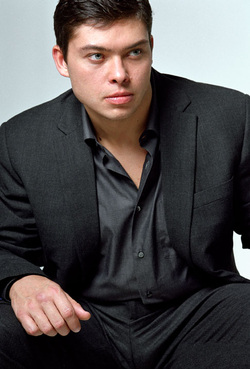 Daniil Shtoda, Tenor Daniil Shtoda, Tenor Another fantastic recital at the Wigmore Hall, this time it was with Russian tenor Daniil Shtoda, with an all Russian program. Shtoda began studying the violin at the age of 4, joined the Chorus Institute of the Academic Cappella M.I.Glinka at the age of 6, and made his debut in the role of Feodor in Mussorgsky’s Boris Godunov at the Mariinsky at the age of 13. No wonder he has been described as a "Wunderkind"! Shtoda has benefited from his association with Larissa Gergieva, who accompanied his recital. Gergieva has worked as a coach at such prestigious places as The Met, La Scala and the ROH, and is the Artistic Director of the Mariinsky Academy of Young Singers, where she was Shtoda's teacher. She describes Shtoda as a singer with "a strong personality and a most generous amount of charisma." Here is Gergieva's recollection of the moment she first met Shtoda: "Daniil approached me with a big bouquet of white roses. He was a very young boy with big blue eyes looking for an audition. I asked him what he was going to sing. “Hermann’s aria” – he answered. I thought to myself it was quite a challenge, since Hermann is a very difficult role. I accompanied him at the piano and, after he finished singing Hermann’s aria...I immediately took him to the Academy, which opened a few days later. He has become one of my favourite pupils whom I love to work with." The concert started with three songs by Rimsky-Korsakov, the most beautiful of which was "The Nymph". Gergieva's execution of Rimsky-Korsakov's watery accompaniment was matched perfectly Shtoda's rendering of the sinuous melody. Particularly touching was Shtoda's pianissimo, high in the head voice, on the final phrase: "but the nymph is in the reeds with her plaits loose." This high pianissimo seems to be Shtoda's calling card. The next composer, represented by four songs, was César Cui. In "The Lilacs", Shtoda caresses and moulds the phrases tenderly yet ardently, giving less while making us want more. More subtle still was the dynamic with which Shtoda infused "The statue at Tsarskaya Selo". The rubato on the phrase "the maiden sits eternally sorrowful" was wonderfully performed, Shtoda's singing filled with aching pity.
Rachmaninov was the next offering, and a powerful one it was too! The fire in the short "It cannot be" coruscated through the audience, with both Shtoda and Gergieva filling the Hall with passion. Even more powerful was the introspective "O fair maiden, do not sing before me", from the same opus (#4) as "In the silence of the secret night", which Dmitry Hvorotovsky performed in his Wigmore Hall recital. It's climax is the phrase "I forget, seeing you, but then you sing", reaching its zenith on a fortissimo A4, which Shtoda navigated with ease. It was, however, that high pianissimo, here on a slow chromatic saunter from A4 to C4 at the close of the song, which really took our breath away. After the interval, we were treated to a whole series of songs by Tchaikovsky. In the haunting "Again, as before, I am alone", Shtoda's elegant phrasing eerily shaped the opening piano A minor phrases, while his powerful upper register thundered the progression from E4 to G#4, before returning, pianissimo, to the opening phrases. In "The nightingale", Shtoda's almost conversational phrasing was very moving, while the "Serenade" injected a much welcomed piece of humour. "Amid the noise of the ball" sits lower in the voice, and here Shtoda showed that he is as comfortable in the chest register as he is in the head. The pair gave three encores, in the last of which Shtoda held a very long pianissimo. I shall list them here once I have found out what they are called. Most of the songs from the recital can be found on his album with Gergieva, published on the EMI Classics label. As I left the office, I could think of nothing better than to sit in the opulent surroundings of the Wigmore Hall, with beautiful music and equally beautiful strawberry ice-cream at the interval, and let all my cares drift away. So, aware only that I was going to hear Czech mezzo Magdalena Kožená, (my ticket was given to me by my good friend, who had unfortunately double booked) I trotted down to the Wiggy in blissful ignorance of what I would be experiencing. I was pleasantly surprised to find that I would be hearing a series of Madrigals and orchestral pieces from the 16th and 17th centuries. The concert featured music from Kožená's 2010 album Lettere Amorose, produced in collaboration with the ensemble Private Musicke, which takes its name from a collection of consort music by English composer Martin Peerson. Founded in 1998 by Pierre Pitzl, who plays guitar and is also the director, Private Musicke consists of Hugh Sandilands (guitar), Daniel Pilz (colascione), Jesús Fernández Baena (theorbo), Margaret Köll (harp), Brigitte Gasser (lira da gamba), and Richard Myron (violone), David Mayoral (percussion). They have quite a few recordings of early music under their belt, and are experienced concert performers. Anyway, back to the performance. There was to be no interval (shattering my dreams of a nice tub of strawberry ice-cream!), so I really hoped that what was on offer was enough to keep me entertained for a couple of hours: I was not disappointed. The concert started with Pierre Pitzl walking nonchalantly onstage, playing his guitar. Next, as if oblivious she was at a concert, came Kožená: her blond hair pulled back, wearing a striking sleeveless, knee-length red dress, and barefoot! As she sang, more of the ensemble came onstage: the whole effect was more like a jam session than a concert. The first aria, by composer Filippo VItali, was "O bei lumi", had a beautifully lilting melody handled tenderly by Pitzl, and sung powerfully and emotively by Kožená. The second composer represented was Sigismondo d'India, an enigmatic composer from Palermo, Sicily. Little is known about his life, his birth date for instance is unknown. In a document from Turin, MS qm. IV. 41 (containing the music for d'India's music for Zalizura), it is stated that he was born in 1562 and died in 1630. Nigel Fortune thinks this unlikely as "they happen to be the dates of birth and death of Charles Emmanuel I. Duke of Savoy, in whose service d'India spent twelve years of his life."1 It is probably safer to assume that he was born in or after 1580. He entered the Duke's service in 1611, and most of his music dates from his time in Turin. Kožená presented us with three pieces by d'India, the most represented composer in the concert. The first was "Cruda Amarilli", with its heartfelt cries and strange, regal-like accompaniment by the lira da gamba. It reminded me of a particularly emotional accompanied recitative. The second piece was "Torna il serena Zefiro". Here Kožená moved between an almost soubrette/countertenor sound and a more smoky mezzo to emphasise the changes in imagery. Her wonderful urgency on the repeated line at the end of second and fourth verses, "Primavera per me non sara mai", gave more form to the aria than that exhibited by "Cruda Amarilli". The last piece, "Ma ché? Squallido e oscuro", again accompanied by the otherworldly lira da gamba, saves its punch for the penultimate word, "esangui", with its long, slow, rising scale, and its descending step-bass on the violone. One of the founders of the opera genre, Giulio Caccini most deservedly has a place in this excellent program. Discovered by Francesco de' Medici in the 1560's, Caccini was singing at the Medici court from the late 1570's. He was a Tenor who was also an accomplished lute player. He was able to accompany himself as he sang. Also famous as a teacher, Caccini trained the castrato Giovanni Gualberto Magli, who took the roles of La Musica and Prosperina in Monteverdi's Orfeo. The aria performed here was "Odi, Euterpe", a very upbeat piece which contrasted nicely with the more angst-ridden offerings. Kožená and the ensemble were excellent in this piece, which had more than a few of the audience tapping away and "conducting" ferociously in the air (this must be the upper class version of playing the air guitar!). Tarquinio Merula, an Italian composer who spent time at the court of Sigismund III, King of Poland, from about 1624 to 1628, has two contrasting arias showcased here. The first, "Conzonetta spirituale", is a lullaby sung by the Virgin Mary to the baby Jesus. The moving, mellifluous melody rises and falls over two constantly repeated chords. With nowhere to hide, the diction, interpretation and technique of the singer are starkly on show. Kožená uses all her skill to highlight the subtle nuances in the text and rhythm, while taking great pains to modify the volume in direct relation to the text. The second aria, "Folle è ben si crede", is much lighter, and less oppressive. Kožená treats the beautiful triplet movement at the penultimate line of each stanza exquisitely, and it is this 'release point' which makes the whole aria so beautiful. My three favourite composers were Strozzi, Kapsberger and Monteverdi. The aria from Stozzi was instantly recognisable as one from the great female composer. She was born the illegitimate daughter of Giulio Strozzi and his servant, Isabella Garzon. She was adopted and baptised into the Strozzi family. She was not only a prolific composer, but an accomplished singer too, and her father took pains to make sure his daughter's talents were developed. Strozzi's works were often full of yearning and heartache, and "L'eraclito amoroso" is no exception. Kožená really gets into the text in this aria, feeling the emotions and vividly projecting them to the audience. The mezzo's smoky darkness comes to the fore in this piece, making it all the more poignant. Johannes Hieronymun Kapsberger, represented by two arias in the concert, was in the service of Cardinal Francesco Barberini for over 20 years. Before that, he had set up academies in his house, in Rome which were very well known and respected. He could be a bit of a hit-and-miss composer: the first aria, "Aurilla mia", is an example of this. The second aria of the performance, however, "Felici gl'animi" is superbe. With the orchestration by Private Musicke, and the treatment of the melodic line by Kožená, the piece could pass as modern latin-themed music: yet another 'foot-tapper' for us in the audience to 'air-conduct' along to. I noticed a few of the audience suppressing the urge to clap along. The last of the composers performed with Kožená was Claudio Monteverdi. Often seen as a transitional figure between the Renaissance and the Baroque periods, Monteverdi is, in my opinion, one of the great musical giants, along with Bach, Beethoven, Wagner, Stravinsky, and Scriabin. The first aria was the famous "Si Dolce È Il Tormento". Placed high in the range, the tessitura was no problem for her, as she moved between bright, shining soprano, and dark, husky mezzo at the end of each phrase. Interestingly, I have only ever heard this piece performed by a man, so to have a female interpretation was a nice contrast. It worked very well. The final piece, "Quel sguaro sdegnosetto", was masterfully performed, and earned a rousing applause. The other pieces were all performed by Private Musicke without Kožená. The improvisation on Luis de Briçeño's "Caravanda Ciacona" was truly amazing, and is something I will not forget. I was tempted to go to the repeat concert on the Friday just to hear this again. Luckily I now have the album, but the 'jam-session' atmosphere at the Wiggy just can't be recreated without those marvellous musicians. It was so modern, so up-to-date, yet so obviously from another time, that it was difficult to know which period you were in. To be honest, I ended up thinking "to hell with it" and just enjoyed the music. A plea to Private Music: The version on the CD is far too short; please release another version (perhaps a live performance?) which we can enjoy over and over again! The next orchestral piece was again an improvisation, this time Gaspar Sanz's "Canarios". Imagine a warm summer night on the beach in southern Spain, away from all the English tourists, with a few young lovers around, all enjoying the dying light dancing on the breaking waves. If I were to describe it in visual terms, that's what the music evoked in me. It was vibrant, vital, and possibly even vivacious! Giovanni Paolo Foscarini's "Ciaccona" was more like getting up early in the morning, as the sun rises over the horizon, jumping into an expensive open-topped sports car, and driving off towards something new and exciting. I know theses descriptions are a little strange, but the ensemble's treatment of these wonderful pieces really brought out some lovely imagery when I heard them, so I thought I'd share them with you all. The other three pieces, Giovanni Paolo Foscarini's "Passamezzo", Giovanni de Macque's "Capriccio stravagante", and Lucas Ruiz de Ribayaz's "Espanoletas" were all charming in their own way, and extremely well played, but the three prevously mentioned pieces were in a different league. So, what's the score? Well, in case you haven't guessed already, I thought it was an excellent concert. It was nice to hear these arias performed by a singer with a full bodied, powerfully emotive voice, rather than a vibrato-less, insipid purity, which I feel does more damage to the genre, and relegates it further into the forgotten outhouse of musical history. Kožená made these pieces real, and made the feelings described in them real. I do hope I get to hear Private Musicke again live, as this concert was a revelation to me. I am so glad I was lucky enough to get this ticket. I probably wouldn't have given the program a second glance before: now, though, I'll be looking out for music like this in the future. 1. Sigismondo d'India. An Introduction to His Life and Works, Nigel Fortune, Proceedings of the Royal Musical Association, 81st Sess., (1954 - 1955), pp. 29
On Friday 11th June, I went to see Dmitri Hvorostovsky (top left) at a song recital at the Wigmore Hall. He was performing a concert dedicated to the great Russian mezzo-soprano Irina Konstantinova Arkhipova (below left), who died on February 11th 2010, a month after her 85th birthday.
Arkhipova will be remembered not just for her beautiful, youthful voice and magnificently long career, but also as a teacher and talent spotter. Almost all big name Russian performers, such as Hvorostovsky, Borodina, Guleghina and Netrebko, were taught by her. She even, in the late 1980's, headed the International Union of Music. I was expecting much from Hvorostovsky, as I had enjoyed his previous concert with Anna Netrebko at the South Bank, and was interested to see how his voice would work with the acousics of the Wigmore Hall. He did not disappoint! He and his pianist, Ivari Ilja, took us on a mesmerising journey through two of the great Russian composers: Piotr Ilyich Tchaikovsky and Sergi Rachmaninov. Many of the opera 'critics' are always ready to point out that Hvorostovsky's voice is not in the 'Heldenbaritone' league, being a smaller voice than someone like, for instance, Bryn Terfel. At the Wigmore Hall, this was not evident, as the size and the acoustic of the Hall allowed his voice to reverberate with considerable force. My favourites were: 'Again, as before, I am alone', 'No, only the lonely heart', and 'In the silence of the secret night'. The first of these rises to a magnificent G sharp in the third verse, which was secure, well placed and dramatic. The second was a beautiful rendition of this well known song, sometimes known as 'None but the lonely heart'. The third, however, was my favourite. The last note was held so long, and with perfect control, that there was an audible gasp from the audience at its end. All in all, another triumph for Dmitri, and another well chosen arist by the Wigmore Hall. The program was as follows: Tchaikovsky Again, as before, I am alone The nightingale The heroic deed I opened the window Don Juan's Serenade Rachmaninov A dream As fair as the day in blaze of noon Do not sing for me, fair maiden Oh no, I beg you, do not leave! Interval Tchaikovsky Reconciliation A tear trembles No, only the lonely heart The fearful moment Rachmaninov When yesterday we met In the silence of the secret night He has taken all from me An excerpt from Musset - Loneliness Christ is risen Recently, I went to see a concert at the Wigmore Hall in Wigmore Street, London. Here I saw Sara Mingardo, a Contralto hailing from Venice. Sara is one of the few true Contraltos in the Classical music world, other notables being Ewa Podles, Marijana Mijanovic, Sonia Prina, and Nathalie Stutzmann. (The Contralto is the lowest of the female singing voices and in classical music, most performers that sing Contraltos roles are in fact Mezzo Sopranos, which is the next voice up).
Mingardo is not what many would view as a typical Contralto - visions of very large women singing roles like Wagner's Erda, for example, come to mind - yet she has a rich, dark tone, and a freely resonating chest register, coupled with stunning flexibility, which allows her to perform baroque music with ease. With respect to her performance, Mingardo was humble and understated, yet she had great presence and was able to carry the emotions of her audience with her. I look forward to hearing her again. Sara sang a range of Arias, starting with three from Handel's Opera Radamisto: Cara Sposa, amato bene Perfido, di'a quell'empio tiranno Ombra cara She then sang two Arias from Handel's Tolomeo: Se un solo èquel core Stille amare And finished by performing a secular Cantata by her Venetian compatriot Antonio Vivaldi: Cessate, omai cessate She gave one encore, performing Ombra mai fu, from Handel's Xerxes. Do check out her album Sara Mingardo: Contralto - a fantastic showcase of her vocal talents. The album was released by the Naïve Recording Label. |
Categories
All
Archives
September 2014
|
MOST VIEWED POSTS
© James Edward Hughes 2013
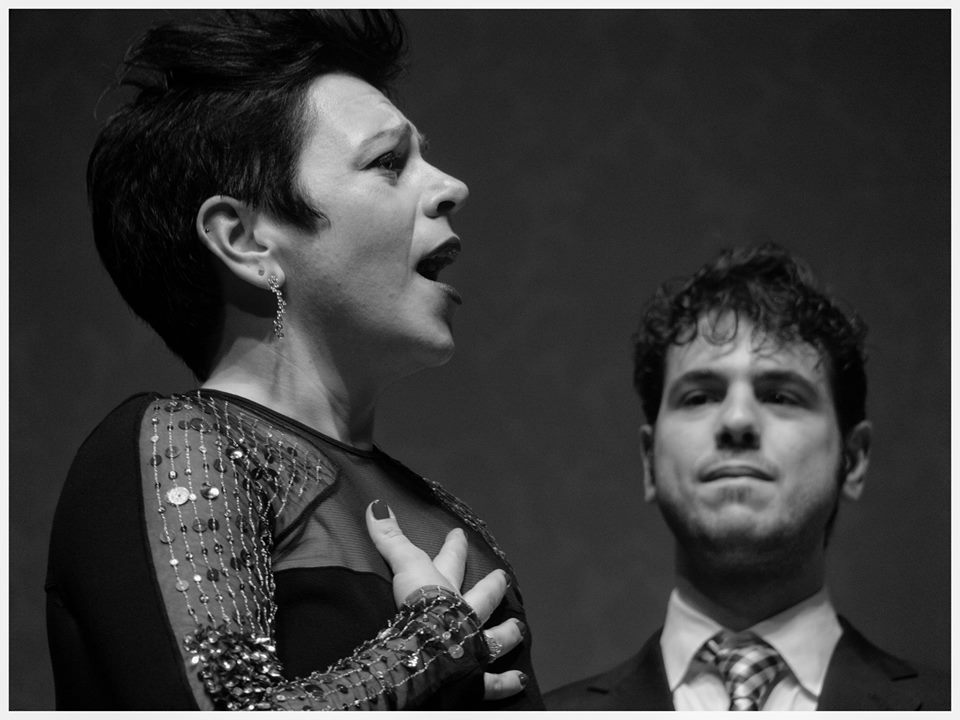
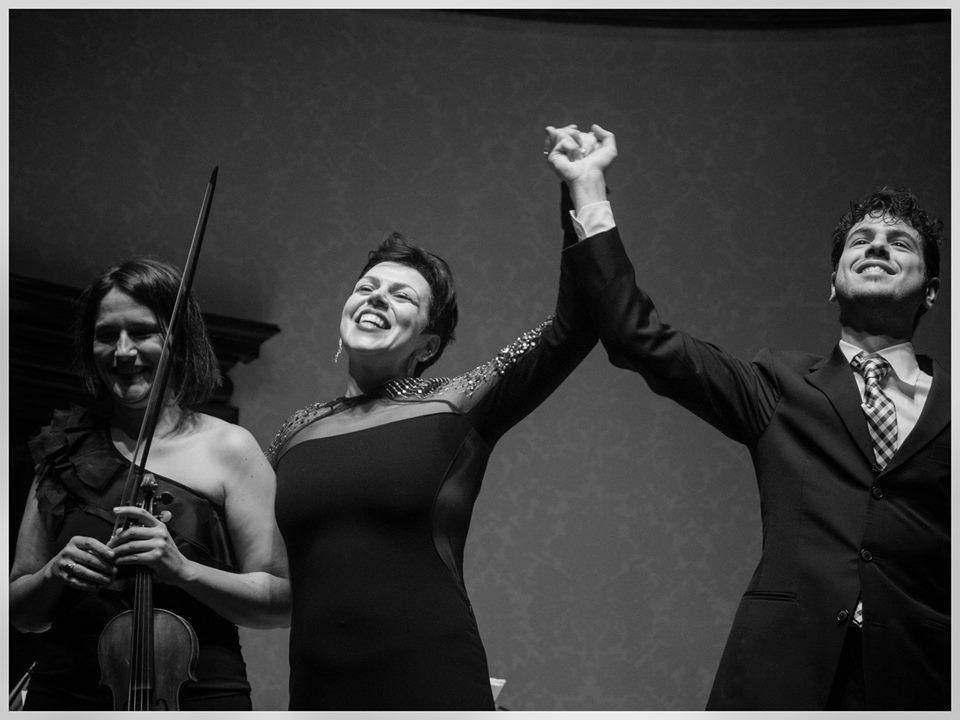
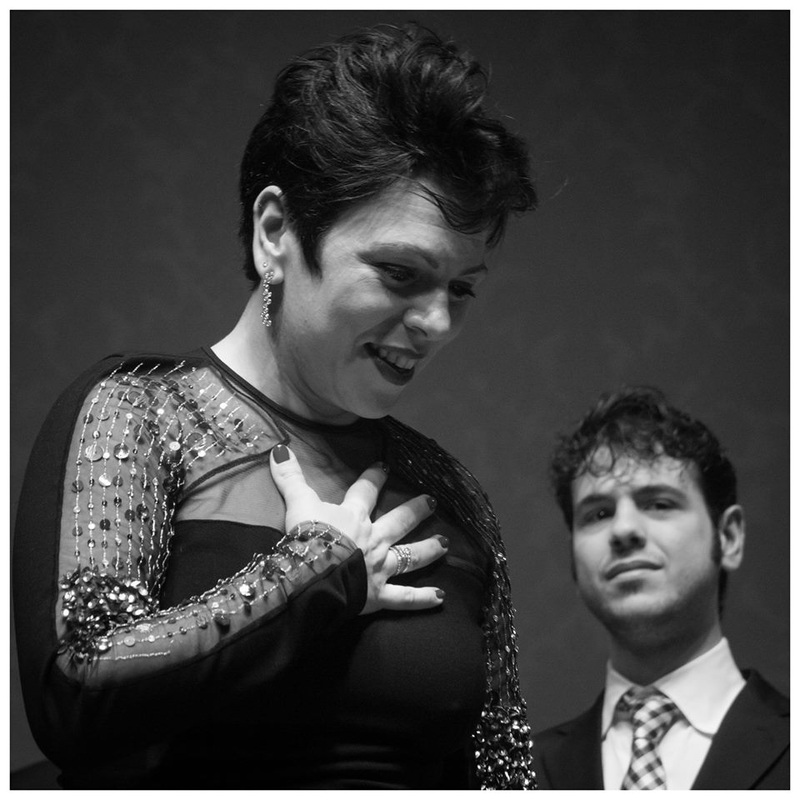
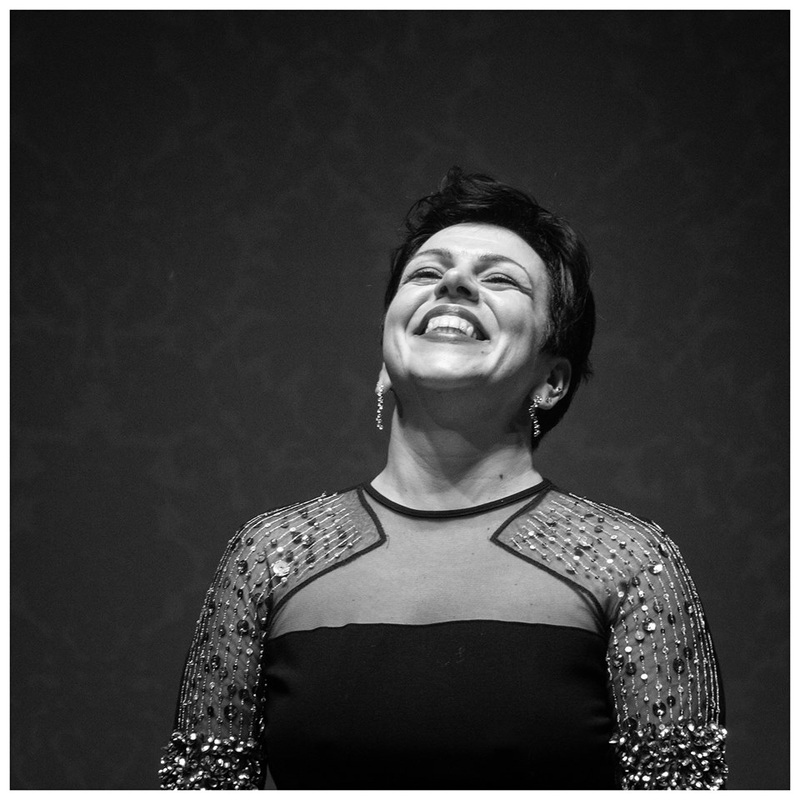
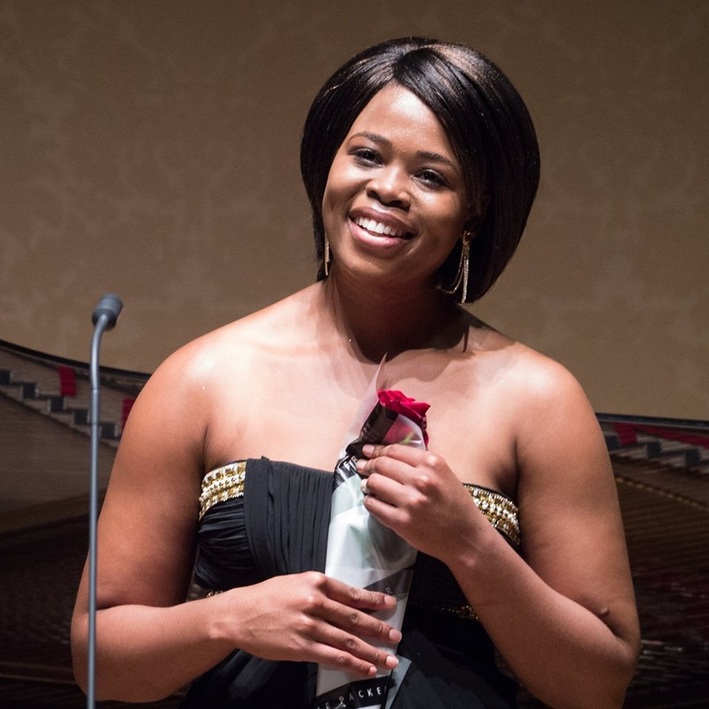
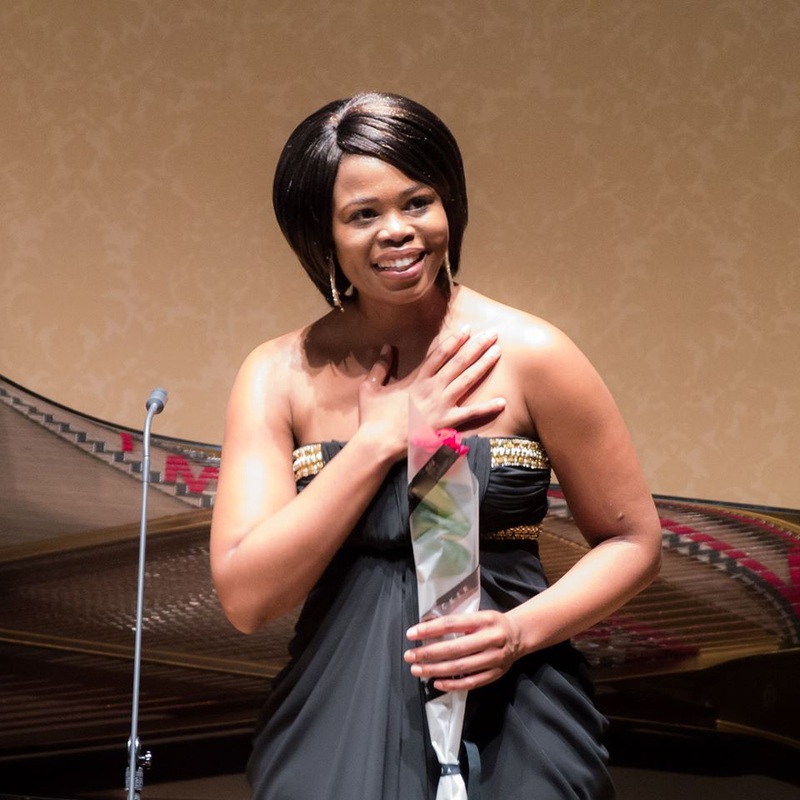
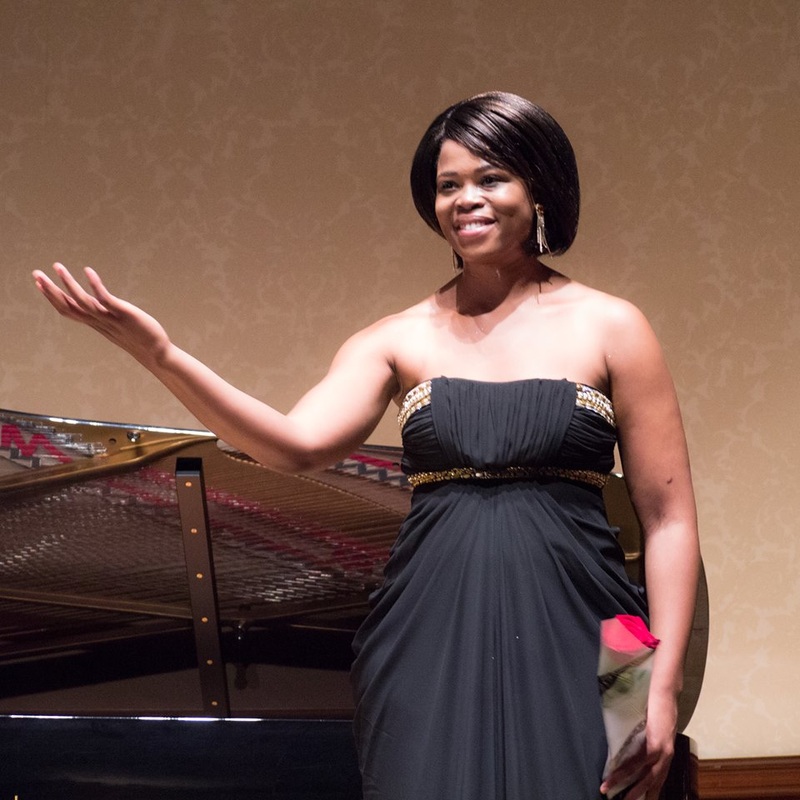
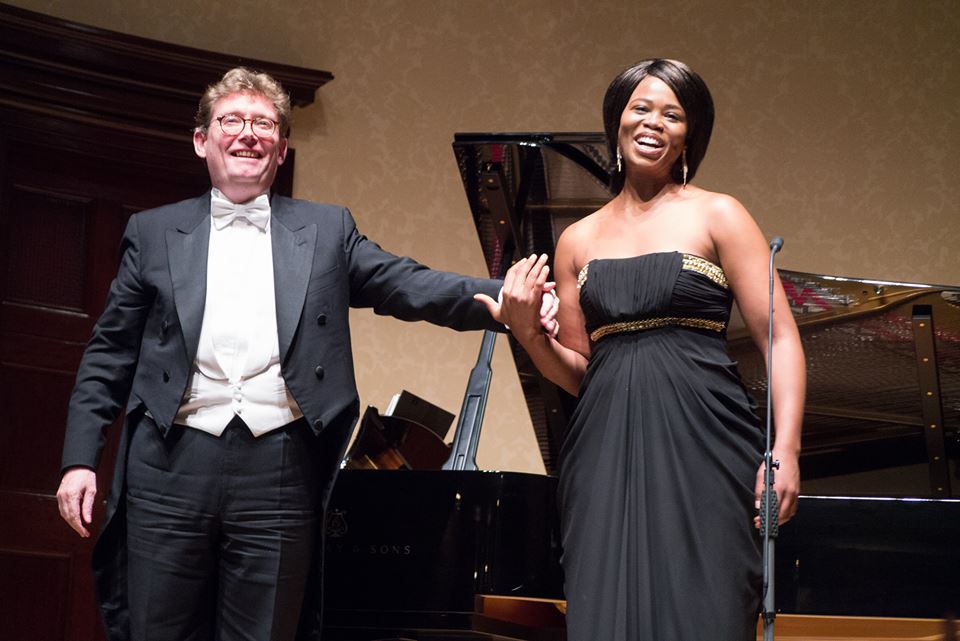
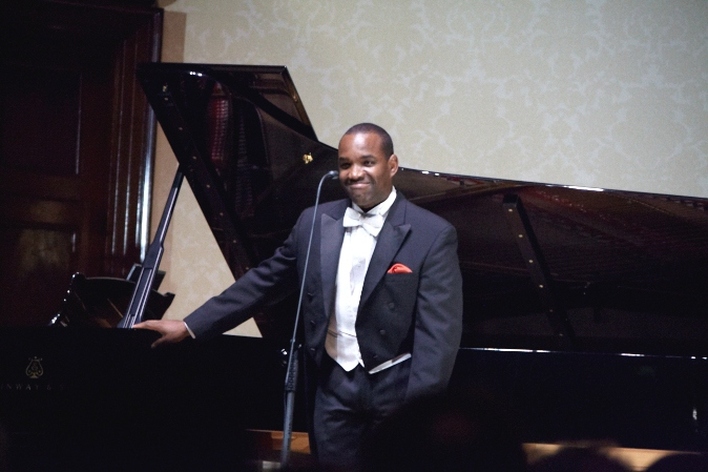
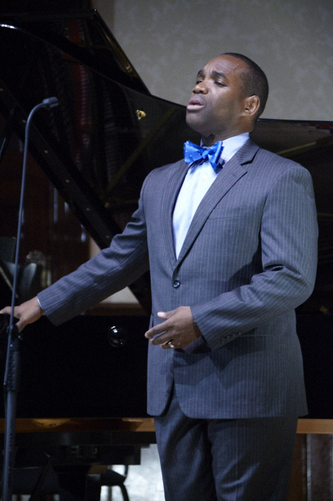
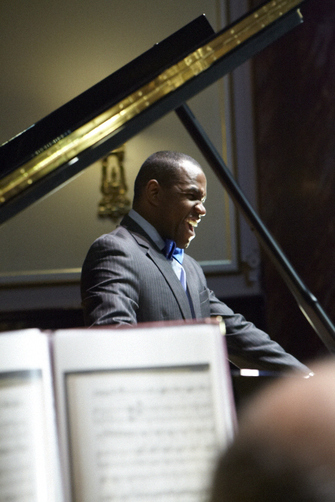
 RSS Feed
RSS Feed
